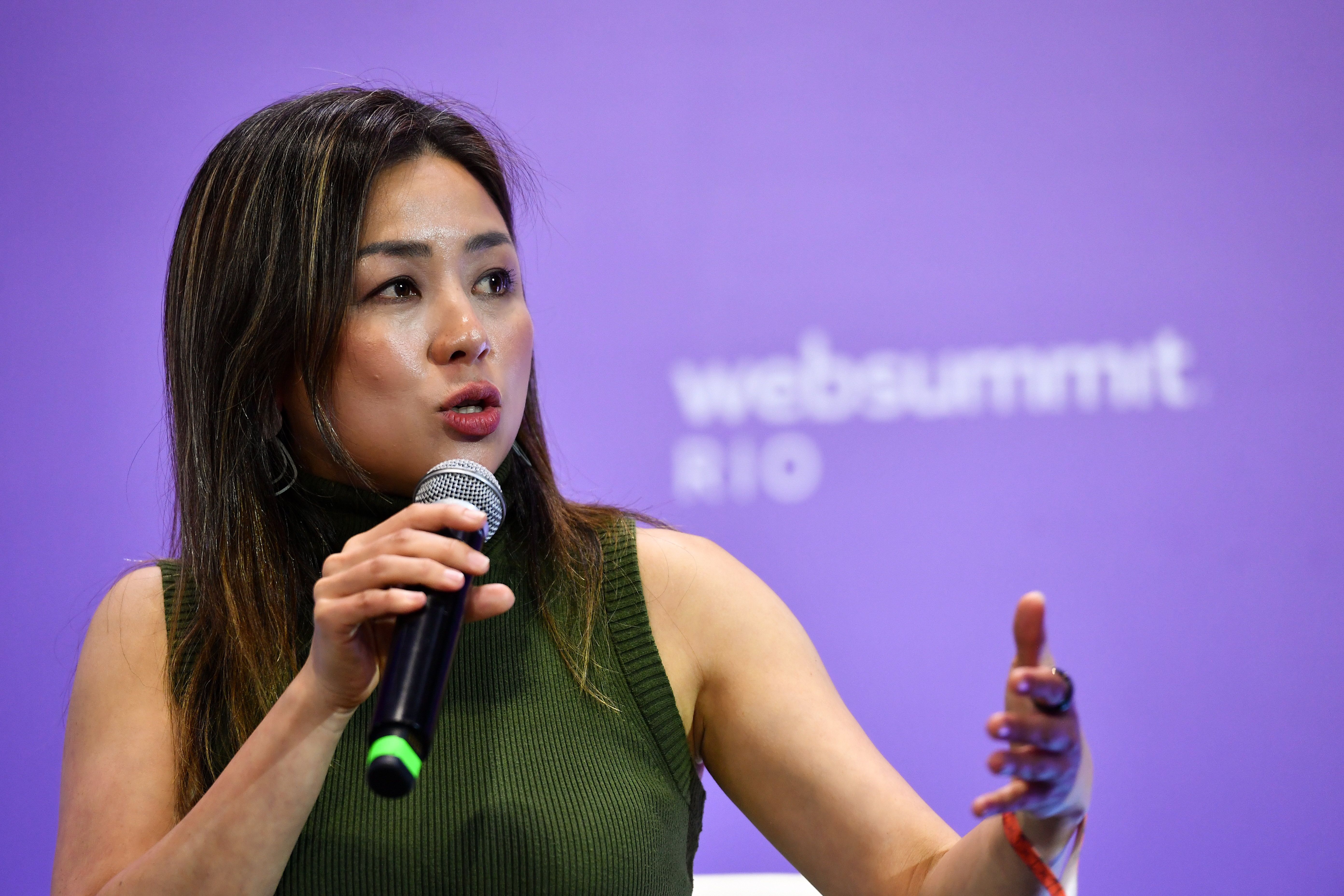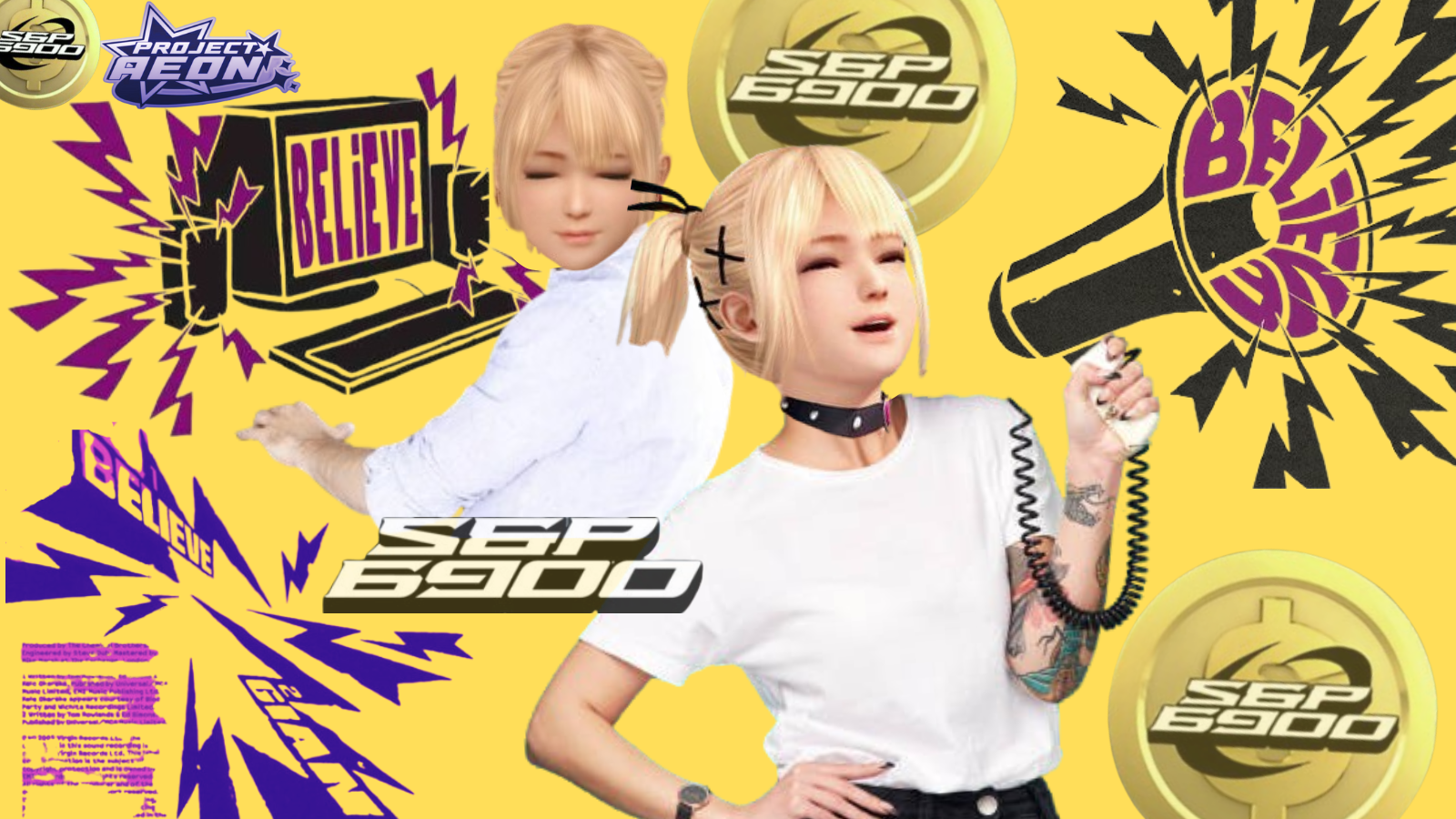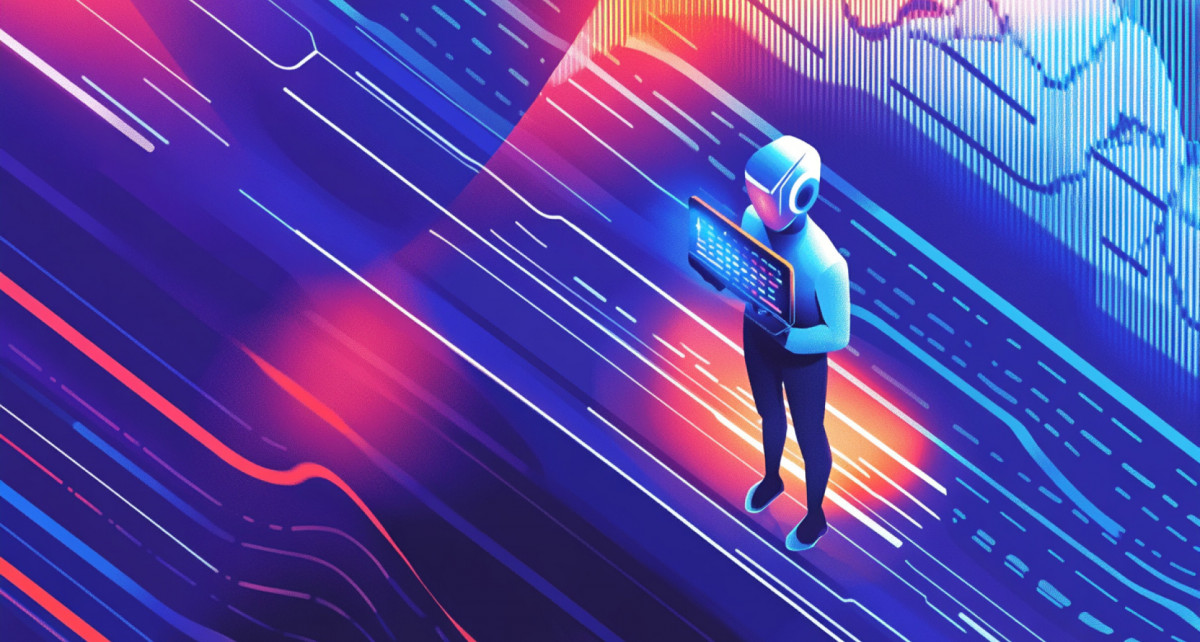Musketon is the creative alter-ego of Bert Dries, a visual artist from Belgium. Musketon is known for his extremely detailed vector graphics that can be magnified up to 64,000% percent, which he encourages viewers to do to discover new details. He started his career as a self-employed artist straight out of school over ten years ago and has since developed his bold, colorful, and accessible artistic style.
As a devoted satirist who left high-end brand work only to find his creative output mocking similar (if not the same) brands that had once been his clients, it seems inevitable that Musketon would set his sights poking fun at the most outspoken and visible set in all of web3: CryptoBros, highlighting the stereotypes as he saw them — Red Bull, Xanax, Bitcoin baseball cap, and cold wallet close at hand.
We had a chance to speak with Musketon ahead of his CryptoBro drop to learn more about his satirical ethos, why he’s reeled in lambasting certain topics, his future with physical redeemables, and if you really can zoom in 64000% on his artwork.
Can you introduce yourself to our audience? What were you doing before NFTs came into your life?
Before NFTs, I was already working on Musketon, which was my main profession for, I think, 11 years. I was doing the same thing as everybody else, going from project to project. It started out as really small projects. And then, over time, it grows bigger and bigger. Also with the projects growing bigger and bigger, I realized, I don’t wanna be doing this for the rest of my life because it’s really frustrating to be working with clients, from my perspective.
So then I decided I wanna do more personal projects. So along the way, the balance between client work and personal projects kind of flipped. I was just creating stuff for myself and posting it to Instagram. And basically, I was being paid and likes and follows. And then 2020 came along, or 2021, and NFTs.
People started reaching out to me, saying, You need to check this out because it makes so much sense for your work. Because I always work digitally. And also, the topics that I include in my illustrations are really up the alley of the crypto art and NFT world. So that’s what I started doing, and it took off really fast. I think I’ve sold close to a hundred NFTs, I always try to do single editions or limited series. In a nutshell, those are the paths that I took.
Where did the name Musketon come from?
I’ve been doing this for 12 years now, and when I started out, I kind of needed a name. Musketon is the Dutch word for a carabiner, like a clasp you use when you go climbing. So it doesn’t really mean anything, it just sounds good. And I think it’s pretty international because you can pronounce it correctly. That’s basically it.
Why did you need a name that wasn’t your own name?
My name’s Berts Dries, and that’s in English. It’s a really Dutch name. So that was my biggest issue, just something that’s not my own name.
Can you tell me pragmatically what surviving on likes and follows looks like as a career?
It’s a bad idea, but also, it’s something that I needed to do, I guess. But you don’t really think about it because being paid in likes and follows also means that you grow a following, and people get to know you, and people start following you as an artist. So that’s really something positive.
But if you think about it, that doesn’t make any sense. So I opened my webshop, and then eventually, people funneled through to the webshop, and I eventually made money from the illustrations.
NFTs make so much more sense because collectors whom I’ve spoken to don’t care about likes or followers. They genuinely care about the arts, the artist, and the work that you make.
Also, the commission system with the secondary market makes so much more sense that you get paid when people sell your work in the secondary market. I would definitely not do [solely social media] again, I guess, because I invested so much time in those likes and follows and all the metrics that it kind of deludes your vision, I guess.
But I think it was worth it because, in that time, I made so much work that made me bigger as an artist. So maybe it was worth it. Or a lot of those pieces were then minted as NFTs.
I had a really creative period from 2018 to 2020, where I basically made an illustration every single day, and I posted it on Instagram. So I got the likes, I got the followers and nice comments, and I sold some prints in my webshop. I sold those later as NFTs. So eventually, it paid off. So yeah, it was worth it, I guess.
I looked at a lot of your early client work, and a lot of it looks remarkable. Can you tell me a little bit more about your kind of growing dissatisfaction or disillusionment with client work?
In the beginning, everybody wants to work for like big clients like Nike or MTV. And I did the exact same thing. And it’s super nice, and it kind of gives you a feeling of validation, like people value you as an artist.
I started noticing that I had my own vision of the stuff that I wanted to create and it kind of conflicted with the vision of big brands. So I decided I had to make a shift to be happy as an artist with the work that I create. I don’t know if that’s the answer to the question, though.
One reason that this question comes up for me is looking at a lot of your work, especially recently, it seems like the opposite of somebody who has ever worked for a brand because you skewer brands as a theme, whether it be your Dick Monald sign or your pieces referencing Amazon or Facebook or Elon Musk. Can you tell me a little bit about that perhaps political urge to speak out against these companies or at least to kind of publicly skewer them?
Yeah, definitely. It’s funny that you mention that. Back in the days of the previous US presidents, I used to do a lot of illustrations about them and all the crazy stuff happening during COVID. And for us Europeans, it’s like super easy. It’s kind of a reality show. But for a lot of people, it’s like a sad reality.
So I started making those illustrations from the point of view of a European. And I got so many good reactions, but also I kind of annoyed so many people with those illustrations because everybody has their own political view, and I don’t wanna offend anybody.
So that’s when I decided I don’t wanna be doing this anymore. I also don’t wanna do religion or harsh pieces that might offend a lot of people. So the easiest way is to go after Facebook, Amazon, and other big brands because everybody hates those brands, but they still use them and kind of love them. I enjoy making those illustrations, and you don’t offend anybody with it. Nobody cares if you make an illustration that’s critical of Facebook or Amazon because, in the end, everybody just keeps on using it.
That’s the only reason that I do it.
And that’s also to answer the question of why I don’t wanna be working too much for brands. I still enjoy working for brands if they give me creative freedom.
I’m curious about your process regarding the amount of detail that you include in your work. I read that you plant details that can only be seen zoomed in 64000%. Can you talk about that?
There are a lot of illustrators. Many people are doing the same thing — or that’s how I see it. I needed to develop something that would separate me from those people. Since I use Adobe Illustrator and I draw in vectors, you can zoom in 64,000%.
I try to use that as a challenge and also an advantage to separate myself from other artists. So I always try to push myself to include crazy details. So if you zoom in 64,000%, that’s something that’s pretty crazy. If you keep on zooming in, you see crazy little details that no one will ever see because nobody has the option.
If you have the JPEG or the PDF, you can zoom in for like 400%, and that’s it. So for me, that’s something that I always love to include. That separates me from other people because it’s something really time-consuming, and it doesn’t make any sense to do because, if you don’t have the screenshots or the source file, nobody will ever see it. But I also share the process online, and that’s what people love to see. That’s the main reason that I do it, and also because I just love the fact that only I know which details are in the illustration.
Do you think there will come a time when you’ll be able to share those in a single file?
Oh yeah. That’s my biggest issue with NFT marketplaces at the moment. You should be able to upload a PDF file which is also a vector, and then you should be able to zoom in infinitely because the information is in there. I hope it will happen one day because that makes so much more sense for me.
Can you tell me about the inception of CryptoBro?
I’ve been part of the crypto NFT scene since the beginning of 2020, I guess. And I was kind of thrown in there, and it was all super new for me.
A stupid example is I had to Google some of the crazy words and abbreviations that they use. And it’s a really tight community of people. Obviously, with anything, you have people that maybe go a little bit too far. I started Googling, and I bumped into the term Crypto Bro. That’s somebody who’s really into crypto, and it’s like a religion almost.
I decided to make this illustration of a toy of how I see the Crypto Bro. So with all the stereotypes like the Red Bull and the ledger. It’s just funny stuff. I didn’t want to be too offensive. And the Crypto Bro illustration is being reposted by actual Crypto Bros. So they actually think it’s funny.
Then somebody reached out to me on Instagram. It’s a girl from France, and she saw the illustration of the packaging and the toy inside. And she was like, I can make this for you if you want.
So I said, Yeah, here’s the file. Go ahead. Have some fun with it.
And then, a few weeks later, she sent me the pictures of the actual toy that she 3D printed and painted. That’s how it came to life.
It’s an illustration that I made based on the community and the culture. Then I collaborated with somebody in France who actually made the toys. Now she’s making a lot.
I’ve noticed you’re working with a lot of physical work lately. Besides the CryptoBros, you’ve also made the Facebook surveillance cameras, the Dick Monald’s sign, and the ass with a hat and sneakers. Can you tell me about this evolution and where it’s going?
NFTs are definitely the future. But I grew up in the 90s, and then I grew up with the internet, and then I started doing my business, and I opened a webshop. And for me, it’s always super fun to make people happy with actual physical stuff. If you have a webshop and people buy prints, they send you messages about how grateful they are to have your print in their living room, for instance. I always enjoyed making those physical pieces and sending them out to people.
That’s what I try to do with NFTs. I always give the collector the option to get a physical print. Some people don’t need the physical stuff, but many still enjoy it.
The CryptoBro drop will be the first drop that’s meant to be with a physical piece. We’re not giving people the option. If you collect the NFT, you can claim the toy. If you don’t want it, don’t give us your address and we can’t send anything.
I’m hoping that we get at least a 99% rate of people that actually claim the toy. We’ll see.
And for the future, I’m focusing more on making objects and physical stuff. We’ll see where it goes. But for now, the most set-in-stone plan that we have is the CryptoBro, and I’m excited to see how it goes.
Do you have any big dream projects that you’re just unable to do right now that you would want that you have on your horizon in the next, say, five years?
Sure. For the past 12 years now, I’ve been working hard, and I enjoyed it. All the stuff that’s happened has been great for me, my career, and also my personal life. It’s because of NFTs that made this possible.
Now, I’ve surrounded myself with different people, like a team around me, that is going to help me to focus on being creative, so I don’t have to deal with stuff that I’m bad at because I’m still an artist, and there’s a lot of stuff that I’m bad at.
There’s one thing that I’m really good at, and that’s creating art. So they are helping me to focus. And we have big plans to bring Musketon to the next level. And I’m really excited about where it goes.
But yeah, I can’t say too much about it. I’m putting a lot of trust in my team, and we’ll see how it goes.
What’s one piece of advice about creativity and art-making that you would give your 20-year-old self?
Patience is a good one. I remember being 20 years old and wanting to be the big artist and having what I have now. But if you look back at it, it makes so much sense to take it slow and take the right steps. There are no shortcuts. I see so many people get frustrated because they don’t have the patience, and they give up, which is perfectly fine for those people.
You need patience and the ability to wait it out and trust. Time will bring the right things on your path. That’s something I really believe in.
For updates on all of our upcoming drops, subscribe to our newsletter below.
Read More: rare.makersplace.com









 Bitcoin
Bitcoin  Ethereum
Ethereum  XRP
XRP  Tether
Tether  Solana
Solana  Dogecoin
Dogecoin  USDC
USDC  Cardano
Cardano  Lido Staked Ether
Lido Staked Ether  TRON
TRON  Avalanche
Avalanche  Sui
Sui  Wrapped stETH
Wrapped stETH  Chainlink
Chainlink  Toncoin
Toncoin  Shiba Inu
Shiba Inu  Stellar
Stellar  Wrapped Bitcoin
Wrapped Bitcoin  Polkadot
Polkadot  Hedera
Hedera  WETH
WETH  Bitcoin Cash
Bitcoin Cash  Uniswap
Uniswap  Pepe
Pepe  LEO Token
LEO Token  Hyperliquid
Hyperliquid  Litecoin
Litecoin  Wrapped eETH
Wrapped eETH  NEAR Protocol
NEAR Protocol  Internet Computer
Internet Computer  Ethena USDe
Ethena USDe  USDS
USDS  Aptos
Aptos  Aave
Aave  Mantle
Mantle  Bittensor
Bittensor  Virtuals Protocol
Virtuals Protocol  POL (ex-MATIC)
POL (ex-MATIC)  Cronos
Cronos  Ethereum Classic
Ethereum Classic  Render
Render  Artificial Superintelligence Alliance
Artificial Superintelligence Alliance  MANTRA
MANTRA  Arbitrum
Arbitrum  Tokenize Xchange
Tokenize Xchange  Ethena
Ethena  WhiteBIT Coin
WhiteBIT Coin